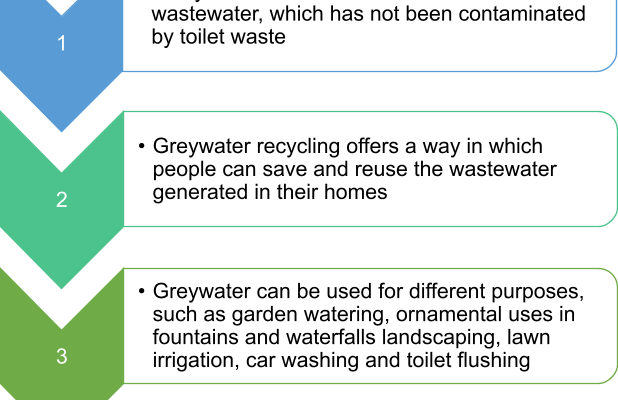One of the largest environmental concerns is scarcity of drinking water sources. The Middle East has some of the largest oil reserves in the world, which produces most of the area’s wealth. Even so, the region’s climate and environment make living harsh. The Middle East requires water resources and suitable land for agriculture. Much of the land that is available for producing food is destroyed by increasing desertification. The UAE has the highest per capita consumption of water in the world. Additionally, for the past thirty years the water table of this region has dropped about one meter per year. At this current rate, the UAE will deplete its natural freshwater resources in about fifty years. Even with a large number of desalination plants to reduce water deficiency, the UAE needs to adjust its water use habits before its energy consumption doubles in 2020. Sustainable water resources are essential for socioeconomic development, and yet water is often misused and wasted. The sound and sustainable management of water resources is crucial for arid and semiarid regions.
In arid and semi-arid regions, water conservation and reuse are issues that receive a great deal of public attention. The responsible use and reuse of water is vital to the sustainability of the water supply and thus for the future of these areas. The treatment and reuse of wastewater is one of the best options for water conservation available to communities located in arid areas. Many large-scale reuse efforts have been developed, such as the watering of golf courses and the irrigation of landscapes with treated municipal effluent. The potential for wastewater reuse is not only limited to large-scale projects supplied by community wastewater treatment facilities but is also available to individual homeowners. Greywater recycling offers a way in which people can save and reuse the wastewater generated in their homes.
This episode provides a succinct introduction to Residential Greywater and its significance as a sustainable solution to the emerging water crisis in UAE. It is the first part of a series titled “Residential Greywater Series” by Sani Water. Sani Water has been at the forefront of providing their customers with the latest products and advanced water treatment technologies available in the drinking water industry. With “Residential Greywater Series”, Sani Water aims to educate and inform their customers about the fundamentals of residential greywater, its environmental reuse benefits, and some of the most popular methods of residential greywater reuse available in the market today.
REFLECTION POINTS

INTRODUCTION OF GREYWATER
Domestic wastewater, or “sewage”, can be divided into two categories: blackwater which originates from toilets and kitchens has gross fecal coliform contamination and generally has high concentrations of organic matter; and greywater which originates from bathrooms and laundries and constitutes the largest flow of wastewater. The term “greywater” refers to untreated household wastewater, which has not been contaminated by toilet waste. It includes the water from bathtubs, showers, hand basins, laundry tubs, floor wastes and washing machines. It does not include waste from kitchen sinks, garbage disposal units or dishwashers. It is called greywater because if stored for even short periods of time, the water will often cloud and turn grey in color. The exact sources of greywater vary according to countries and organizations. Some definitions include the water sourced from the kitchen and dishwasher.
QUANTITY OF GREYWATER GENERATED BY HOUSEHOLD
The amount of wastewater generated by any household will vary greatly according to the dynamics of the household and is influenced by such factors as the number of occupants, the age distribution of the occupants, their lifestyle characteristics, water-usage patterns, the cost of water and the climate. Some water-usage surveys undertaken in capital cities Overview of graywater management: health considerations different countries have identified an average wastewater flow of 586 L per day for each household, as shown in Table 1.

SIGNIFICANCE OF GREYWATER REUSE
Much of the daily-generated wastewater is recognized as greywater. The total volume of greywater potentially generated each day from the average household (in different countries) is 356 L; this represents about 60% of the total generated wastewater. Greywater can be used for different purposes, such as garden watering, ornamental uses in fountains and waterfalls, landscaping, lawn irrigation, car washing and toilet flushing. Greywater reuse utilizes an on-site resource which would otherwise be wasted. As a result of reuse, fresh drinking-water supplies are conserved which in turn enables the water to remain in natural ecosystems Greywater reuse succeeds in saving money spent by water authorities, reduces sewage flows and reduces the public demand on potable water supplies. By reusing greywater, the load on wastewater disposal systems is reduced, and therefore, the life of the wastewater disposal system is prolonged and capital expenditure required for the upgrading and expansion of systems is delayed.
REFERENCES
- Shankhwar, A. K., Ramola, S., Mishra, T., & Srivastava, R. K. (2015). Grey water pollutant loads in residential colony and its economic management. Renewables: Wind, Water, and Solar, 2(1), 1-6.
- World Health Organization. (2006). Overview of greywater management health considerations (No. WHO-EM/CEH/125/E).
- https://thewaterproject.org/water-crisis/water-in-crisis-middle-east
- //www.trade.gov/knowledge-product/united-arab-emirates-water
- //greywateraction.org/residential-greywater-system-study/
The post <span style="color: #4690cd;">R</span>esidential Greywater Series – Introduction And Significance Of Reuse appeared first on SaniWater.
